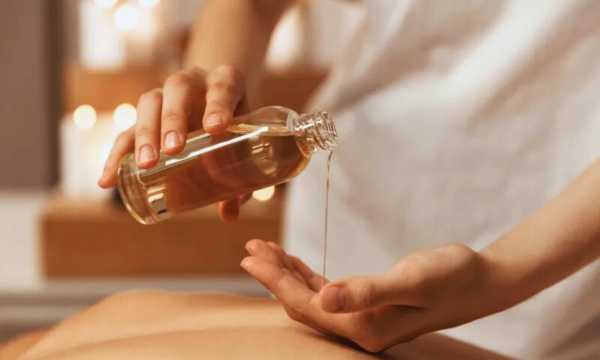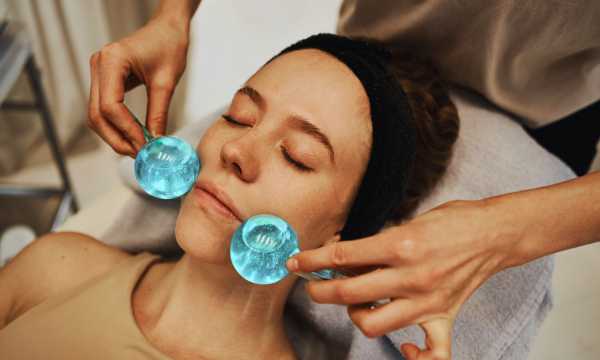The quality of massage oil makes all the difference in the final result.
Ad
Texture, absorption, aroma, composition… When it comes to selecting massage oil for professional use, every detail truly matters.
Those who work with body therapies know this well: the right touch starts long before the hands meet the skin.
Ad
Choosing the right product to guide that experience makes a huge difference. And it’s not just about making the glide smoother, it’s about comfort, safety, connection, and effectiveness.
With so many options on the market, it’s natural to wonder: what’s the best cream or oil? The most neutral? The most nourishing? Or the one with an inviting scent that captivates clients from the very first contact?
Ad
The truth is, there’s no single formula. Each technique, skin type, and client profile calls for a different approach.
In this guide, we’ll explore the most important criteria to help you choose massage creams and oils with confidence, care, and intelligence. Let’s dive in!
1. Essential Criteria for Choosing Professional Massage Creams and Oils
First, let’s be clear: we’re talking about products for professional use.
That means they need to deliver more than just a pleasant scent.
- Proper texture: smooth enough for good glide, without leaving the skin greasy or sticky.
- Controlled absorption: not too fast (requiring frequent reapplication), not too slow (which can feel heavy).
- Safe formulation: free from parabens, artificial dyes, or ingredients that might irritate the skin.
- Versatility: if you serve a wide variety of clients, a neutral base product is a great advantage.
Additionally, a good cream or oil must be compatible with your professional routine. If you perform multiple sessions per day, you need a product that won’t stain linens, drip excessively, or be difficult to clean.
2. How to Choose massage oil for Specific Techniques

How to Choose the Ideal Massage Oil (Google Source)
Each massage technique requires a different kind of product. And this choice has a direct impact on the effectiveness of your touch and the client’s comfort.
- Relaxation massage: opt for plant-based oils with soft scents (like lavender or chamomile) that promote relaxation.
- Therapeutic massage: choose massage oil with anti-inflammatory properties (such as arnica, copaiba, or andiroba).
- Body sculpting massage: creams with caffeine or slimming agents can enhance results. Here, a firmer texture works better.
- Hot stone massage: denser oils are ideal for maintaining glide during heat application.
If you work with pregnant clients, elderly individuals, or people with sensitive skin, always prioritize hypoallergenic, fragrance-free products.
Respecting the body’s individuality is a key part of professional care.
3. Evaluating Ingredients: Natural, Neutral, and Hypoallergenic
This part deserves special attention. Everything we apply to our skin can be absorbed. So when it comes to ingredients, less is more.
Prefer pure plant-based massage oil (such as grapeseed, sunflower, sweet almond, or jojoba), and avoid mineral-based products (like mineral oil or liquid paraffin), which can block the skin and reduce its ability to breathe.
Also, be mindful of:
- Synthetic fragrances: may trigger reactions in sensitive skin.
- Invasive preservatives: such as parabens or BHT.
- Artificial colorants: unnecessary for the product’s function.
Whenever possible, choose vegan products that are gentle not only on your skin, but also on the planet and animals.
4. Tips for Testing and Evaluating Massage Oil Quality
You don’t need to buy dozens of products to find the best option.
A few simple tips can help you test before investing.
- Do a touch test on your forearm: apply a small amount and observe how the product behaves.
- Smell the aroma: it should be pleasant, but not overwhelming. The client should feel relaxed, not leave with a headache.
- Evaluate how long it lasts during a massage: volatile products require constant reapplication.
- Request samples: many professional brands offer testing kits for therapists and estheticians.
- Observe the post-massage residue: a good oil should be absorbed by the skin without leaving a sticky, greasy, or overly heavy feeling, ensuring comfort for the client after the session and avoiding the need to remove excess oil.
Trust your instincts. You’ll know when a product truly fits into your routine.
5. How to Store and Preserve Massage Creams and Oils
Even the best product won’t perform well if it’s poorly stored. Heat, light, and moisture can seriously affect the quality and shelf life of massage oil.

How to Store and Preserve Products (Google Source)
Here are some simple, effective storage tips:
- Keep in a cool, dry place, away from direct sunlight.
- Use tightly sealed containers to avoid oxidation and contamination.
- Avoid leaving the bottle open during a session. This helps preserve the formula and prevents air exposure.
If you buy large containers for cost savings, consider transferring smaller amounts into smaller bottles for daily use. This helps keep the rest of the product fresh longer.
6. Best Brands and Where to Buy Professional Massage Oil
There are many reliable brands on the market. The most important thing is to choose those with a strong reputation, safe formulas, and transparent sourcing.
Some globally recognized professional brands include:
- Bon Vital’ (widely used by physical therapists and massage professionals in the U.S.)
- Biotone (broad professional line with hypoallergenic and vegan options)
- Sacred Earth Botanicals (organic, cruelty-free, and sustainability-focused)
- Weleda (established European brand with natural ingredients and global certifications)
- NOW Solutions (great range of pure vegetable and essential oils at accessible prices)
You can find these products:
- In stores specializing in aesthetics, holistic therapies, or physical therapy supplies
- On trusted online platforms like Amazon, iHerb, Massage Warehouse, or VitaCost
- From local distributors focused on wellness and body care professionals
Always read the product descriptions carefully, check for quality certifications, and when possible, try smaller sizes before purchasing in bulk.
Conclusion
Choosing the best massage oil is, above all, an act of care, for others and for yourself, as someone who uses your hands to ease pain, bring well-being, and improve lives.
More than brands and labels, what truly matters is the intention behind each choice. And when it’s made with attention, the results speak for themselves: in the client’s relaxed smile, in the lightness they feel, and in your own confidence while working.
If you’d like to dive deeper into the world of wellness, we have more content to inspire you. Keep exploring, your touch deserves it.



